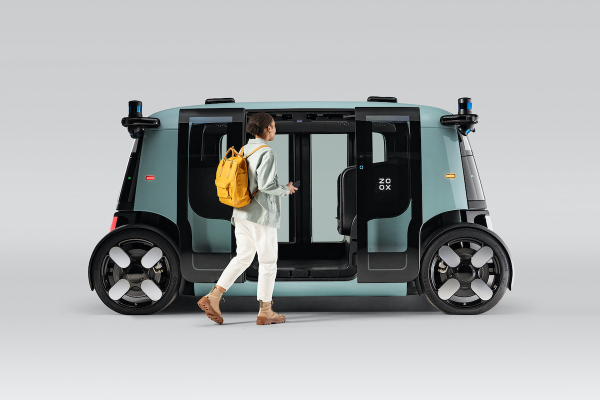Zoox, the autonomous vehicle company that was acquired this year by Amazon, revealed this week the product of six years of work: A purpose-built self-driving vehicle designed to carry people — and someday maybe even packages — in dense urban environments.
The company’s story has captured the attention of skeptics and supporters alike, perhaps because of its secretive nature and outsized mission. Unlike its rivals, Zoox is developing the self-driving software stack, the on-demand ride-sharing app and the vehicle itself. Zoox also plans to own, manage and operate its robotaxi fleet.
Unlike its rivals, Zoox is developing the self-driving software stack, the on-demand ride-sharing app and the vehicle itself.
It’s been an expensive pursuit that almost led to its demise before Amazon snapped it up — and the mission is still far from over. But today, as an independent Amazon subsidiary, it has the financial support of one of the world’s most valuable public companies.
TechCrunch interviewed Zoox co-founder and CTO Jesse Levinson about the company’s milestone, the vehicle design, its exit to Amazon and what lies ahead.
This interview has been edited for brevity and clarity.
TechCrunch: What was your trick or how did you remain focused for six years on something that is futuristic, expensive and possibly could fail? What did you personally do to keep that focus?
Jesse Levinson: Well, doing something like this is definitely challenging and it requires patience. I think the advice I would give is first to convince yourself that what you’re doing makes sense and is important and worth doing. If you’re starting a company because your goal is to make as much money as possible, if it turns out to be hard it’s going to be really difficult to convince yourself and your team and investors to stick with the idea.
One of the great things about Zoox is that the idea itself just makes a lot of sense. From first principles, there’s really a compelling reason to solve the problem the way we’ve been solving it and the market opportunity is unquestionably enormous. So armed with those facts and a team of wonderful employees and investors who strongly believed in that, we were able to weather some of the ups and downs of the industry, even though it’s not always been an easy ride.
Let’s go back in time to the very first concept when you started to think of what a purpose-built vehicle would look like. Those early drawings showed a very, very different looking type of vehicle.
Are you referring to maybe like the sports-car-looking vehicle? We were actually never planning on launching a sports car as our first product; that was more of like a vision statement. Honestly, if you’re trying to move people around cities, it makes much more sense to have the kind of compact carriage like we showed this morning. We were never actually building a sports car.
What is it like to create a long-term, cutting-edge product that exists at the edge of regulation? It seems like a very unique problem.
I would say that if you have a big idea and you’re confident that it makes sense, you should at least explore the idea, rather than giving up because the current regulations aren’t designed for it.
At the same time, it’s very important to be respectful of the regulatory process, and you can’t assume that you can ignore it. I think companies that have tried that approach have usually found that doesn’t work very well either. We’ve taken a very proactive approach to working with regulatory agencies at the local, state and federal level, and we’ve been very forthcoming with “this is how we look at the problem” and “this is what we want to do.”
We’ve also been fortunate because over time the regulations on the local, state and federal level have really evolved to accommodate what we’ve been working on since 2014, even though when we started the company in 2014, those regulations did not exist.
The vehicle today, was that what you had in your mind, or what the team had in mind, from the very beginning? Or was it a bit different?
Yeah, honestly, there have been very few substantive changes to the vehicle’s design since we started working on it in 2014 and 2015. Obviously, we refined it and actually had to make it work from an engineering and crash perspective. But if you look at some of the drawings that we were exploring in 2014 and 2015, it’s extremely similar.
[ad_2]
Source link


